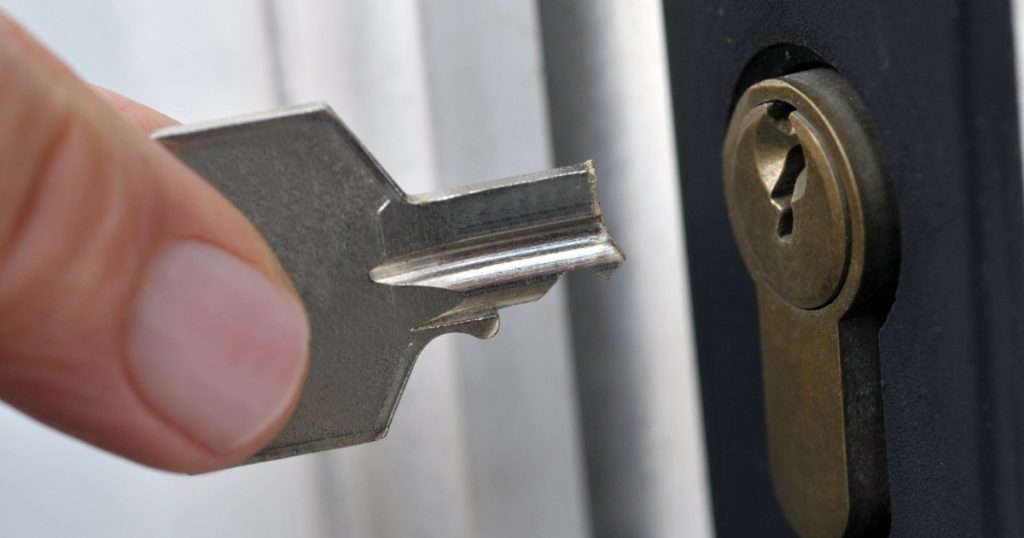Door locks are an essential component in securing our homes, offices, and vehicles. However, like any other mechanical device, they are prone to wear and tear, which may lead to them malfunctioning or breaking down.
In this article, we will explore five signs of a broken door lock and provide guidance on what to do if you notice any of these issues.
Sign 1 – Difficulty in Turning the Key
Identifying the Issue
One of the most common signs of a broken door lock is difficulty in turning the key. This can be caused by several factors, such as misaligned parts, worn-out pins or tumblers, or a damaged key.
If you find yourself struggling to turn the key in the lock, it’s essential to address the issue immediately to prevent further damage or potential lockouts.
Solutions
To resolve this issue, try lubricating the lock with a graphite-based lubricant or silicone spray. This can help to ease the friction between the moving parts and may resolve the problem.
If lubrication doesn’t help, consider hiring a professional locksmith to examine the lock and recommend a suitable course of action. In some cases, rekeying or replacing the lock may be necessary.
Sign 2 – Key Getting Stuck in the Lock
Recognising the Problem
Another sign of a broken door lock is when the key gets stuck in the lock, either when you are trying to insert or remove it.
This issue can be caused by a worn-out key, a misaligned lock, or internal damage to the lock mechanism. Ignoring this problem can result in you being locked out of your property or unable to secure your door.
Taking Action
If your key is stuck in the lock, avoid using force to remove it, as this can cause further damage. Instead, try gently wiggling the key while applying light pressure to dislodge it.
If this doesn’t work, call a residential locksmith who can safely remove the key and assess the condition of your lock. They may suggest rekeying or replacing the lock if necessary.
Sign 3 – Loose Door Lock or Handle
Spotting the Issue
A loose door lock or handle is another indication of a broken lock. This can result from worn-out screws or internal components, leading to reduced security and increased vulnerability to break-ins.
If you notice that your door lock or handle is loose, it’s crucial to take action as soon as possible.
Remedies
Tightening the screws on your door lock or handle may solve the problem. However, if the issue persists or the internal components are damaged, it may be necessary to replace the lock entirely.
Consult with a professional 24/7 locksmith to determine the best course of action for your specific situation.
Sign 4 – Inconsistent Locking Mechanism
Understanding the Problem
An inconsistent locking mechanism, such as a deadbolt not fully extending or retracting, can be a sign of a broken door lock.
This issue can result from worn-out or misaligned parts within the lock or a damaged strike plate on the door frame.
An inconsistent locking mechanism can compromise your security, making it essential to address the problem promptly.
Solutions
Adjusting the strike plate on the door frame may resolve the issue. If this doesn’t help, seek the assistance of a professional locksmith who can inspect the lock and determine the cause of the problem.
In some cases, the locksmith may need to realign or replace internal components of the lock or even replace the entire lock. Ensure that you choose a reputable locksmith to avoid substandard work or unnecessary costs.
Sign 5 – Visible Damage to the Lock or Door
Identifying the Signs
Visible damage to the lock or door, such as cracks, dents, or scratches, can indicate a broken or compromised lock.
These signs can result from attempted break-ins, general wear and tear, or accidental damage. In any case, a damaged lock can weaken your overall security and make it easier for intruders to gain access to your property.
Addressing the Damage
If you notice visible damage to your lock or door, it’s crucial to take immediate action. Contact a local locksmith to assess the extent of the damage and recommend the best solution.
Depending on the severity, they may suggest repairing the existing lock or replacing it with a new, more secure option.
Conclusion
By being aware of the five signs of a broken door lock – difficulty in turning the key, the key getting stuck in the lock, a loose door lock or handle, an inconsistent locking mechanism, and visible damage to the lock or door – you can ensure the security of your property and take timely action to prevent further issues.
If you encounter any of these signs, it’s essential to seek the help of a professional locksmith. They can provide expert advice and services to repair or replace your lock as needed, ensuring that your property remains safe and secure.
Remember to choose a reputable locksmith to guarantee quality workmanship and avoid unnecessary expenses.

